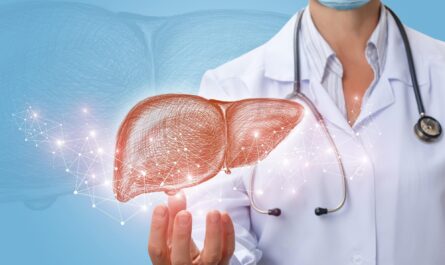
Pain is an inevitable part of life that we all must face at some point or the other. Whether due to injury, illness or simply due to the natural wear and tear of the body as we age, pain can drastically affect our quality of life and ability to enjoy normal daily activities. For those suffering from chronic or severe pain, finding effective relief is a top priority. In recent years, pain patches have emerged as a popular non-invasive option for pain management. But do they really work? Let’s take a closer look.
How Do Pain Patches Work?
Pain patches, also known as transdermal patches, work by delivering pain relieving medication through the skin and into the bloodstream. Most commonly used in pain patches are medications like lidocaine, diclofenac and capsaicin.
Lidocaine works by blocking the sodium channels in nerve cells, preventing the transmission of pain signals to the brain. Diclofenac is a non-steroidal anti-inflammatory drug (NSAID) that reduces pain and swelling. Capsaicin is the compound that gives chili peppers their heat. It works by depleting the body’s supply of substance P, a chemical messenger that transmits pain signals to the brain.
When applied, these medications are slowly released from the patch into the skin layers and capillaries. From there, they are absorbed into circulation and carried to the specific pain site to relieve symptoms. The medication is delivered continuously for up to 7 days with a single application.
Advantages of Pain Patches
Convenient and Non-Invasive: Pain patches provide relief without the need for pills, creams or injections. Wearing a patch is simple, convenient and avoids gastrointestinal side effects seen with oral medications.
Precise Targeted Delivery: Unlike oral medications that spread systematically, patches deliver medication directly to the painful area for maximum benefit and minimal systemic exposure.
Round-the-Clock Relief: Medication is released slowly and steadily from the patch, providing consistent pain relief over long periods compared to pills which only provide temporary relief with each dose.
Avoiding “Peaking and Troughing”: Continuous absorption prevents roller-coaster fluctuations in medication levels seen with multiple doses throughout the day from oral medications. This leads to steadier pain relief.
Potential Applications
Back Pain: Patches containing lidocaine, diclofenac or other medications can help relieve lower back pain when placed on the affected area.
Arthritis Pain: Patches are very effective at delivering medications deep into joints to reduce arthritis pain in the knees, hands, hips and other sites.
Post-Surgical Pain: Placing a patch over incisions provides round-the-clock relief after procedures like C-sections, hernia repairs or joint replacement surgeries.
Sports Injuries: Patches help soothe overuse injuries, muscle strains and other active lifestyle related pains.
Migraine Relief: Some patches contain ketamine or other medications to relieve migraine symptoms when applied to the temples or back of the neck.
Breaking Through Barriers
While pain patches have obvious advantages, some barriers have slowed their adoption. One is the misconception that they only work for localized superficial pains. Research shows they can effectively deliver medication to deep joints and even into the spinal cord for nerve pain relief when placed at nearby sites.
Another concern is whether patients will stick to wearing the patch continuously for days. Studies find adherence rates as high as 75-85% when given proper instructions. Many find them less bothersome than oral or injection-based alternatives.
Cost is another factor limitation use. However, considering the money saved from fewer doctor visits and reduced reliance on stronger oral painkillers, patches provide overall cost-effective pain management.
The Future is Bright
With an aging global population and growing chronic pain burden worldwide, non-invasive pain relief options are more important than ever. Researchers continue engineering patches with improved formulations, dose customization and self-heating abilities for better penetration. As awareness increases of their versatility and advantages, pain patches are positioned to transform pain care in coming years. For many chronic and acute pain conditions, a patch may be the ideal solution for getting life-changing relief.
*Note:
1. Source: Coherent Market Insights, Public sources, Desk research
2. We have leveraged AI tools to mine information and compile it


